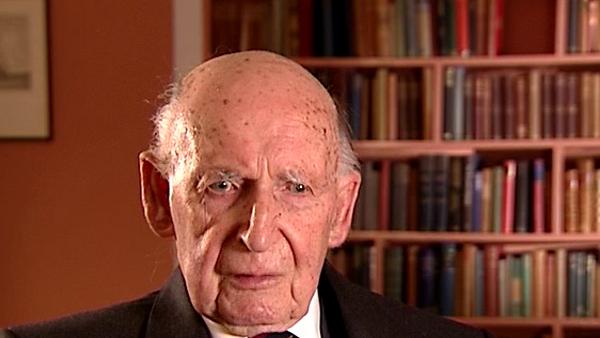NEXT STORY

Observations of radiation from space
RELATED STORIES

NEXT STORY

Observations of radiation from space
RELATED STORIES



The Transit Telescope became an excellent instrument, but not for the purpose of which we built it. I think the time... I'm now talking about 1949, and I had a telephone call from FC Williams, who was then developing his computers in Manchester, and whom I'd worked with during the war, and he asked me if I remembered Hanbury Brown. Well, of course, I remembered Hanbury Brown, and he said, 'Well, Hanbury Brown wants to come back', and... he had left the organisation after the war, and was then working with Watson Watt on a commercial development. But he wanted to come back and complete his studies in the university, which he had left in 1938, in order to help EG Bowen with the development of radar. It was airborne interception. And FC Williams kindly said that he thought that Hanbury Brown might be more useful and more interested in what I was doing than what he was doing on his computers. I mentioned this to Blackett, and Blackett was very keen to supply me with students when he saw that we were beginning to developed, and we obtained for Hanbury Brown an ICI Fellowship.
So it was in that way that Hanbury Brown came to me, and his presence in the next few years was absolutely vital to the development of Jodrell. He came to me, and I suggested... I showed him the Transit Telescope, I showed him the results, which had been obtained by Victor Hughes, and I said, 'Would he like to take over that instrument and use it for the study of the cosmic radiation from space?' He did so, and he acquired another research student, Cyril Hazard, and together they started work on equipping this Transit Telescope with a suitable radio receiver. Hanbury Brown was then one of really one of the world's experts on electronics, and so the building of sensitive receivers was of no problem to him whatsoever, and he produced an excellent receiver. I think we were then working on a wavelength of about 160 megahertz or 200 megahertz, in that order, anyhow.
Bernard Lovell (1913-2012), British radio astronomer and founder of the Jodrell Bank Observatory, received an OBE in 1946 for his work on radar, and was knighted in 1961 for his contribution to the development of radio astronomy. He obtained a PhD in 1936 at the University of Bristol. His steerable radio telescope, which tracked Sputnik across the sky, is now named the Lovell telescope.
Title: Robert Hanbury Brown comes to work at Jodrell Bank
Listeners: Megan Argo Alastair Gunn
Megan Argo is an astronomer at the University of Manchester's Jodrell Bank Observatory researching supernovae and star formation in nearby starburst galaxies. As well as research, she is involved with events in the Observatory's Visitor Centre explaining both astronomy and the history of the Observatory to the public.
Alastair Gunn is an astrophysicist at Jodrell Bank Observatory, University of Manchester. He is responsible for the coordination and execution of international radio astronomical observations at the institute and his professional research concerns the extended atmospheres of highly active binary stars. Alastair has a deep interest and knowledge of the history of radio astronomy in general and of Jodrell Bank in particular. He has written extensively about Jodrell Bank's history.
Tags: Transit Telescope, Manchester, Jodrell Bank, F C Williams, Robert Hanbury Brown, Watson Watt, E G Bowen, Patrick Blackett, Victor Hughes, Cyril Hazard
Duration: 2 minutes, 51 seconds
Date story recorded: January 2007
Date story went live: 05 September 2008